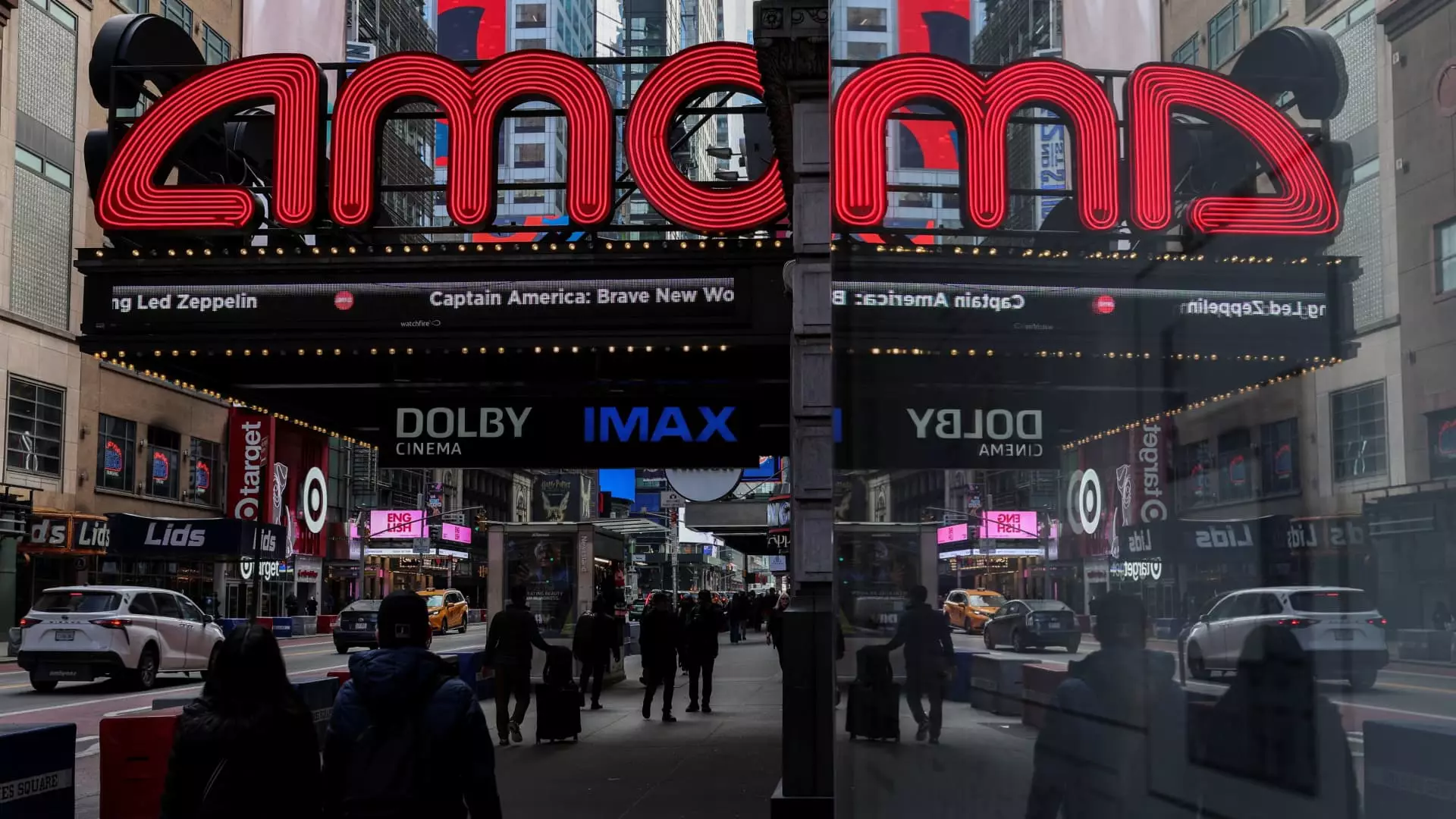AMC Entertainment is pushing boundaries in the cinematic realm, committing to expand its premium screen offerings in a move that’s both timely and audacious. By increasing its number of Dolby Cinemas by 25% through 2027, AMC is not merely responding to demand; it is redefining what it means to experience a film in a theater. This transformation is not just necessary; it is bold, especially in a time when streaming is dominating the digital landscape.
The immersive nature of premium formats—like Dolby Cinema, Screen X, and 4DX—offers moviegoers an experience they cannot replicate at home. These formats cater to the modern audience’s craving for an experience, and as traditional screens become increasingly overlooked, AMC’s strategy speaks volumes about the evolving movie-watching culture.
The Financial Risk and Reward
AMC’s commitment comes with risks. It’s an investment based on the belief that audiences will pay the higher ticket prices that accompany premium experiences. The average ticket price for these enhanced formats hovers around $17, which is an 8% uptick since 2021. While it seems a minor jump, the cumulative effect could significantly boost AMC’s bottom line, considering the 33% growth noted in PLF ticket sales.
Yet, one must wonder: is this expansion merely reacting to the blockbuster-driven nature of Hollywood? It’s worth scrutinizing whether there is potential over-reliance on big-budget films that funnel consumers into theaters. The emphasis on spectacle over substance could dilute the overall film experience, but AMC is betting that audiences are willing to pay for grandeur—a calculated gamble in an industry that thrives on the momentum of the spectacular.
Experiential Audiences
The growing market for premium large format screens is a reflection of audiences’ evolution. The experience-driven consumer expects more than just a film; they seek an event. In this context, AMC’s expansion aligns perfectly with where entertainment is heading. As Kevin Yeaman of Dolby notes, premium moviegoing is “defining the modern box office.” This sentiment echoes the frustrations of many cinephiles who tire of the lackluster engagement that standard digital formats often deliver.
Audiences want to feel enveloped in the experience, and technologies like Dolby Atmos and the immersive 270-degree visuals of Screen X cater to that desire. It’s a bold affirmation of the belief that the heart of cinema lies in its ability to enthrall and enrapture, pushing fans to engage with films in a profoundly different way.
Blockbusters and the Sympathy for the Mainstream
However, one might argue that the surge of focus on major franchises compromises the diversity of storytelling in cinema. Films like “Oppenheimer,” “Avatar,” and “Dune” inevitably capture the limelight, but what about the myriad of indie films yearning for exposure? By investing heavily in an expansion that prioritizes big-budget blockbusters, AMC risks sidelining smaller films that traditionally contribute to a richer cinematic landscape.
The future of cinema cannot hinge solely on franchise films. While AMC’s strategy may seem sound economically, the concern lingers that it may further entrench an obsession with types of films that often minimize creativity in favor of proven revenue models. It needs to find balance, allowing both artistry and commercial viability to coexist.
The Cultural Responsibility of Theaters
AMC has a cultural responsibility as a major player in the movie theater landscape; it must not only cater to the demands of mass audiences but also uphold a commitment to creativity and achievement in storytelling. The expansion of PLF options is laudable, yet AMC should also prioritize spaces for independent voices and unique narratives amid the spectacle.
In a sense, AMC’s evolution is a microcosm of the greater conversation surrounding cinema today: how to innovate and attract audiences without sacrificing the very essence that led to the love of film in the first place. Existing cinema enthusiasts may appreciate the elegance of cutting-edge technology, but it’s vital to ensure that future generations are exposed to a full spectrum of stories and perspectives.
As AMC strives to lead in creating rich, layered experiences, both the industry and audiences must grapple with what that means for the art of film itself. The landscape is shifting rapidly, and the role of cinema must evolve with it.

